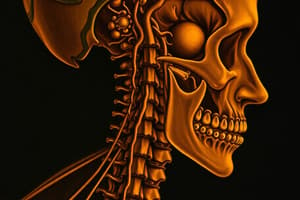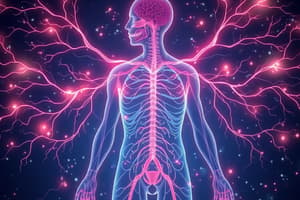Podcast
Questions and Answers
What are the two divisions of the autonomic nervous system and how do they differ in function?
What are the two divisions of the autonomic nervous system and how do they differ in function?
The two divisions are sympathetic (thoracolumbar outflow) and parasympathetic (craniosacral outflow). They work in opposing manners; sympathetic activity predominates in stressful situations and is used for energy utilization, while parasympathetic activity conserves energy and is active during rest.
Explain the role of the autonomic nervous system in controlling the body's functions.
Explain the role of the autonomic nervous system in controlling the body's functions.
The autonomic nervous system controls involuntary body functions such as heart rate, gland secretion, blood vessel constriction/dilation, and pupil size, playing a major role in maintaining homeostasis.
What parts of the brain control the autonomic nervous system?
What parts of the brain control the autonomic nervous system?
The autonomic nervous system is controlled by the hypothalamus and medulla oblongata, which receive information from the limbic system and cerebrum.
Describe the effects of autonomic stimulation on the body.
Describe the effects of autonomic stimulation on the body.
How does the autonomic nervous system contribute to maintaining homeostasis?
How does the autonomic nervous system contribute to maintaining homeostasis?




